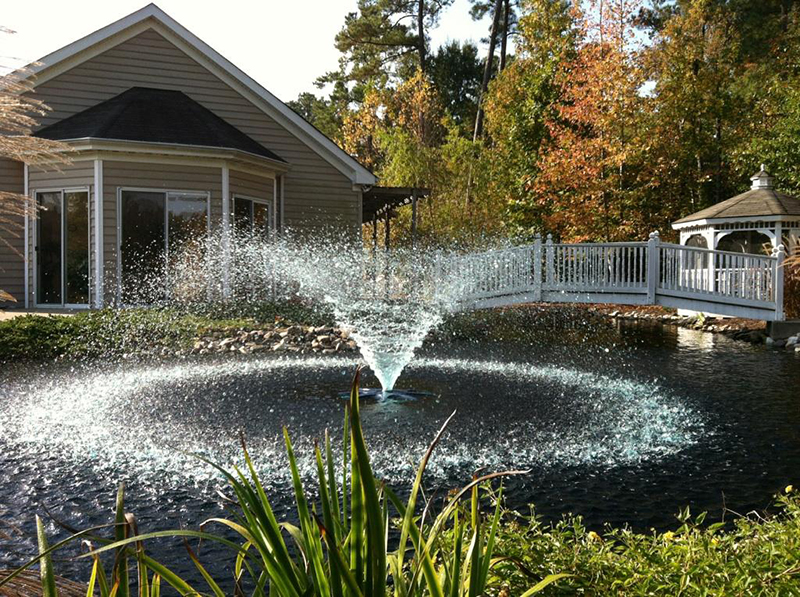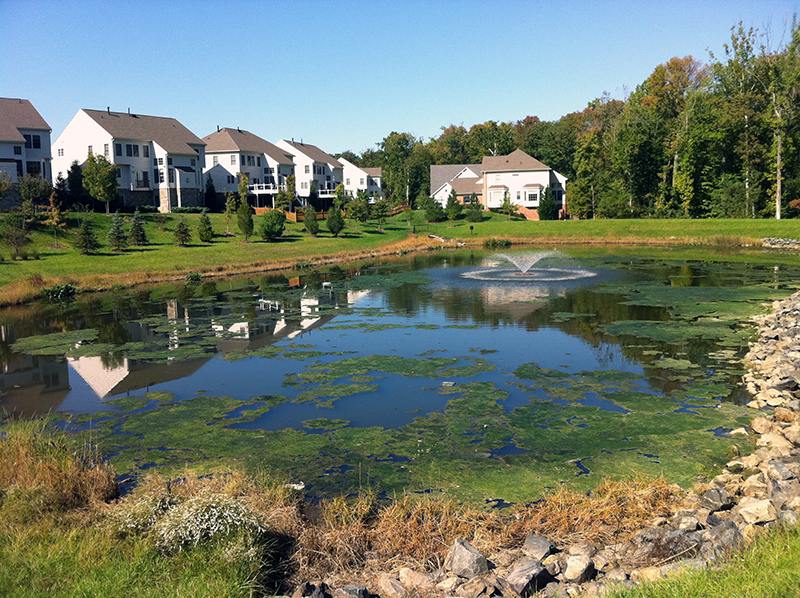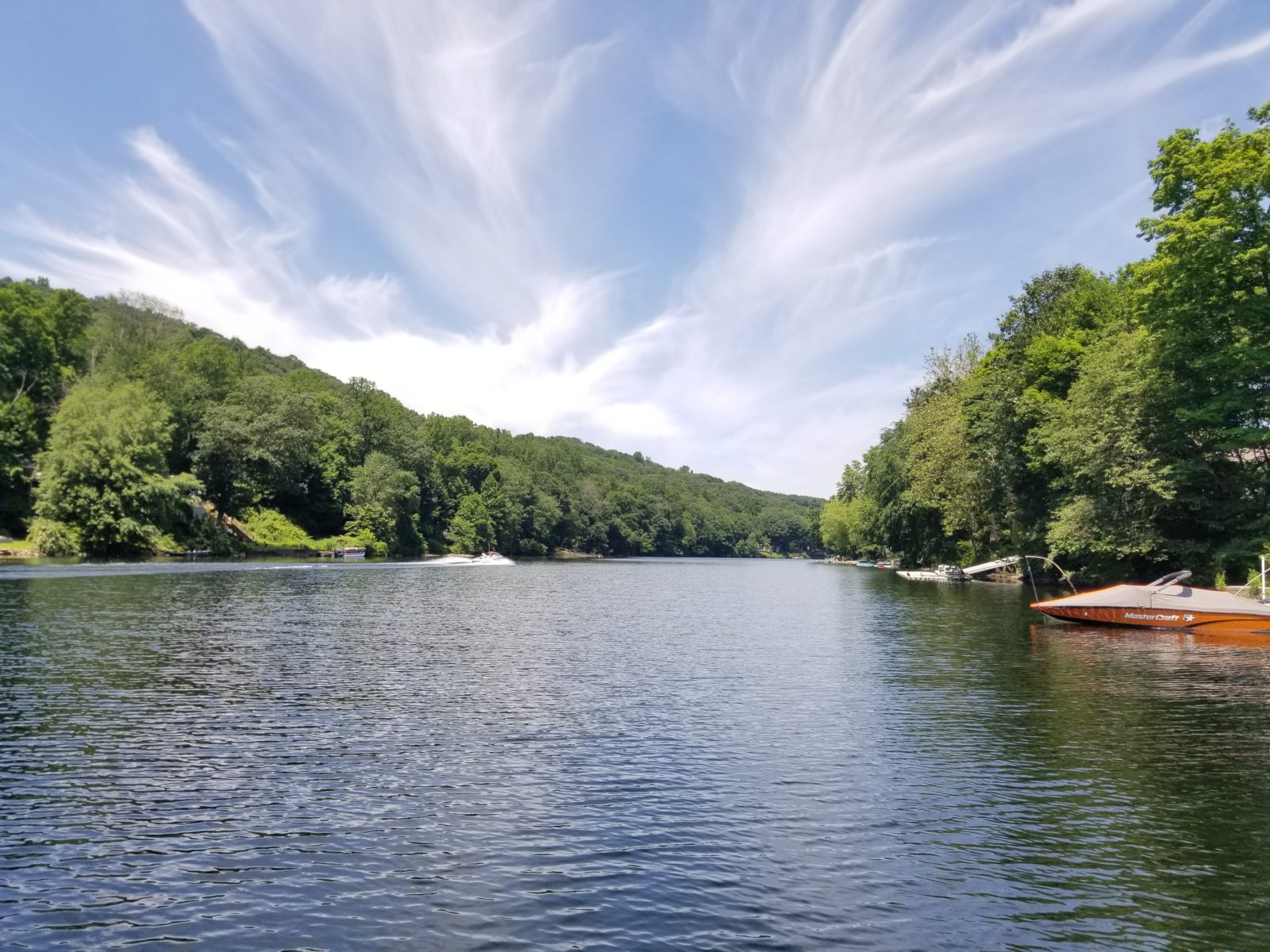Stormwater Pond Management: Nuts and Bolts, Water Ways
November 21st, 2013
AS SEEN IN CAI’s Common Ground Magazine, Sept/Oct 2013, Written by Industry Expert, Kevin Tucker, President of SOLitude Lake Management
Many communities have some sort of stormwater management system—a lake, pond, wetland or dry retention basin—designed and constructed during initial development. These stormwater systems help filter pollutants and manage the water runoff into surrounding streams, rivers, lakes, bays, the ocean or other waterways.

Some stormwater systems are incorporated as an amenity and become part of the community’s desired aesthetics. Homes adjacent to a lake or pond typically are sold as waterfront property, commanding a higher price. Other stormwater systems are hidden and become overgrown, odorous and generally unsightly. Residents might not even know they are there.
Whether a stormwater system is a planned amenity or a forgotten swamp, state and local municipalities have regulations for managing and maintaining it. If you don’t handle stormwater systems properly, be assured your repair costs will be significant, and your community is likely to be fined for code violations. The longer you wait to implement a good maintenance program, the more costly remediation will be.
Stormwater management facilities deteriorate as they age. Each year, wet areas become more overgrown with nuisance vegetation and loaded with nutrient-rich sediment and organic muck. Algae blooms more frequently, and the areas fill with trash, debris and much more. Degraded pipes and outflow structures and unstable dam embankments cause some to fail.
With proper management, associations can handle structural issues and meet regulatory requirements effectively and inexpensively. They also can create a water body, wetland or other aquatic habitat that is a focal point for community enjoyment.
Plants. Buffer plants—a green zone around the water’s edge—improve water quality and reduce algae, odors and other unsightly problems by filtering nutrients and providing a habitat for beneficial wildlife. Plants stabilize shores and prevent erosion by minimizing sediment flow into the water. That, in turn, reduces frequent and costly dredging to remove sediment buildup.
Communities should use plants—grasses, sedges, rushes and beneficial flowering wetland species—that are native to the area; they make natural, aesthetic, low-maintenance buffers. Turf or lawn grasses aren’t good choices for buffers because they need to be mowed. When nutrient-rich clippings fall into the pond, organic matter builds up, the shoreline erodes and sediment enters the pond.
Fountains. Many communities install fountains to add a beautiful and serene focal point, but they’re also important to the health and ecological balance of aquatic resources. Fountains improve water quality by circulating, destratifying and aerating water. Pond aeration improves natural biological processes that reduce nutrients, in turn reducing algae, poor water clarity and foul odors. Circulation also eliminates stagnant water, which deters mosquito breeding.
 Bacteria and minerals. Stormwater systems can be inoculated with natural, beneficial aerobic bacteria to maintain ecological balance. Most ponds are plagued with filamentous algae; left unmanaged, it takes over a pond. Beneficial aerobic bacteria consume the same nutrients as algae, which keeps it in check and reduces unsightly blooms. Adding mineral-based products to water also eliminates plants’ and algae’s primary food source—making unsafe or unsightly blooms much less likely.
Bacteria and minerals. Stormwater systems can be inoculated with natural, beneficial aerobic bacteria to maintain ecological balance. Most ponds are plagued with filamentous algae; left unmanaged, it takes over a pond. Beneficial aerobic bacteria consume the same nutrients as algae, which keeps it in check and reduces unsightly blooms. Adding mineral-based products to water also eliminates plants’ and algae’s primary food source—making unsafe or unsightly blooms much less likely.
Fish. Stocking fish in a pond or lake can help balance an aquatic ecosystem, eliminate mosquitoes and control algae and invasive aquatic weeds. If desired, it also can provide communities with recreational fishing. In many states, associations are allowed to stock sterile grass carp, which enables them to maintain ponds without herbicides.
Minnows and other forage fish not only consume mosquito larvae but also are a food source for larger predator fish. If stocked annually, minnows are great for controlling pests.
Associations can use many strategies to maintain a stormwater system properly. The key is striking the right balance between natural and engineered solutions.
Contact the experts at 888-480-5253 for all of your lake, pond and fisheries management needs.
Kevin Tucker is the owner and President of SOLitude Lake Management. Since 1998, SOLitude Lake Management has been committed to providing full service lake and pond management services that improve water quality, preserve natural resources, and reduce our environmental footprint. Services are available throughout the Eastern United States. Fisheries management consulting and aquatic products are available nationwide. Learn more about SOLitude Lake Management and purchase products at www.solitudelakemanagement.com.
© Community Associations Institute. The above article is reprinted with permission from Common Ground™ magazine, published by Community Associations Institute. Further reproduction and distribution is prohibited without written consent. Go to www.caionline.org for more information.










